When working from home, most of the time we lose the track of time and end up with incomplete tasks. Thus planning and making sticky notes is the best practice we use. But, what if I tell you that you don’t need these things and still complete your work on time. In this article, we will learn how to use Microsoft Planner and keep track of tasks when working from home.
Microsoft Planner is a to-do app that comes only with Office 365. In these days of self-quarantine let’s learn how to use the application to make ourselves more productive. While being at home can make us lazy, prioritizing tasks is what we need to do.

Use Microsoft Planner to keep track of tasks
The application works with “Plans” tied to Office 365 Groups. This means that all the tasks or plans work according to the group to which they belong. When a new plan is created, a new group also gets created automatically. Unless the task is assigned to an existing group it will always create a new group. But, if you don’t understand it then don’t worry, you will learn while working on a daily basis.
Read: How to add Plans and Tasks in Microsoft Planner.
When we work for an organization whether they are big or small, we differentiate even a single task. From Planning to Completion, we divide a task into multiple stages. The planner allows us to create buckets like this so that we can differentiate between the tasks. Now, smaller organizations may divide the tasks like To-Do, In Progress, Completed. However, the naming convention and no. of buckets may vary when compared to bigger organizations.
When the point is about writing an article, we try to structure the aliasing such as Planning, Research, Writing, Editing, Reviewing, Submitted for Review, etc. We can also use Progress bars to show the progress of the tasks.
To create the Tasks, you need to create the Buckets. Buckets contain the tasks accordingly.
In the Board section, Click on Add new bucket.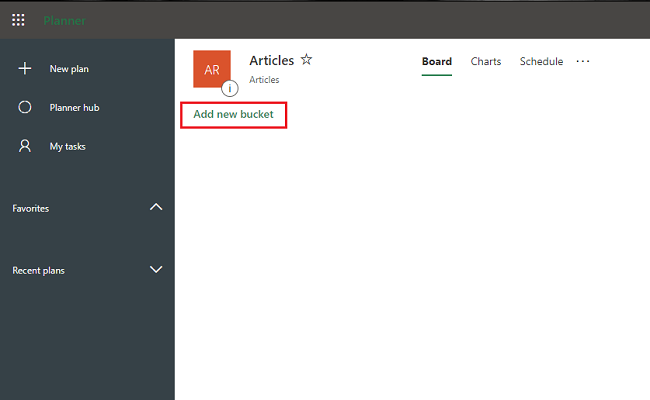
Enter the name of the bucket.
Now click on Add task.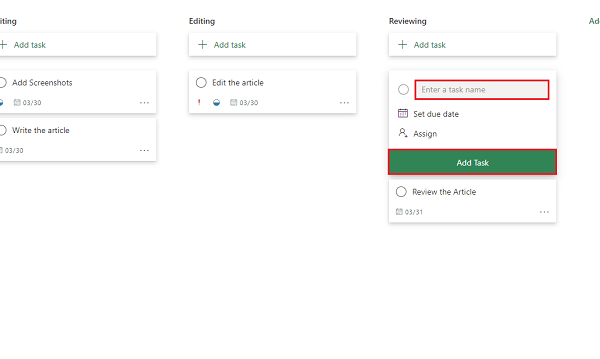
Enter the task name, set the due date and assign it to the employee.
Click on Add Task and the task is created.
After creating a Plan and the Tasks, one can simply prioritize the. To set the priority, click on the Task from any Bucket. Now select the Priority level from the dropdown.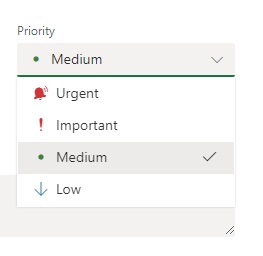
Each priority level has its own logo. To assign a task, click on the Assign button and enter the employee’s email ID. You can also set the task’s colors. Enlarge the task; on the right side of the window, you will encounter the color palette. Select anyone from it.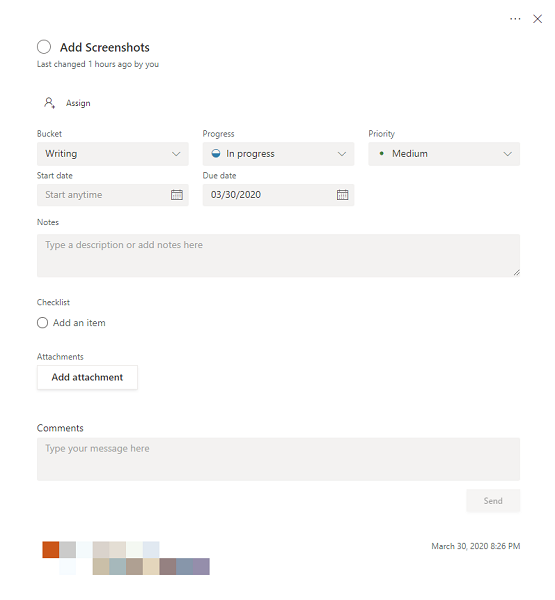
You can easily set the progress of the tasks assigned to you. Enlarge the task and select the Progress of the task from the dropdown list. Enter the Notes or Descriptions of the task.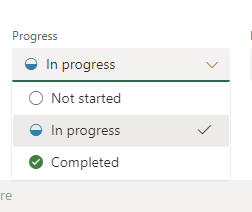
To check the overall progress of the Plan and the Tasks, click on Charts from the menu above. It will show you the status of the plan in every possible manner.
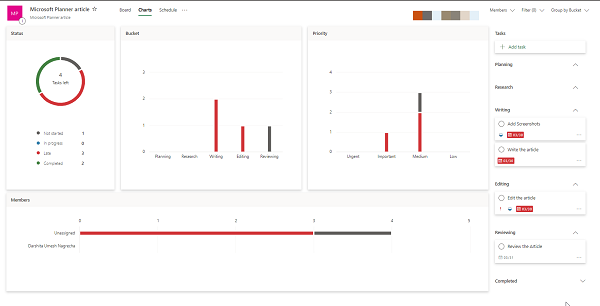
You can also add your Tasks to your own Outlook Calendar. Just click on the three dots in the upper menu beside Schedule and select Add plan to Outlook calendar. 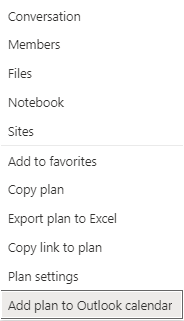 Now click on Publish and then click on Add to Outlook.
Now click on Publish and then click on Add to Outlook. 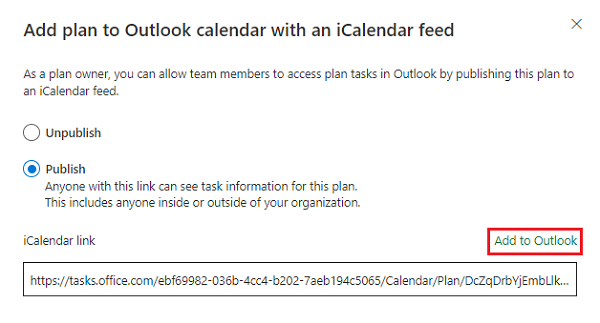 In a new tab, your Office 365 Outlook Calendar will open up. Here select the calendar you use for your office work, pick a color and click on Import.
In a new tab, your Office 365 Outlook Calendar will open up. Here select the calendar you use for your office work, pick a color and click on Import.
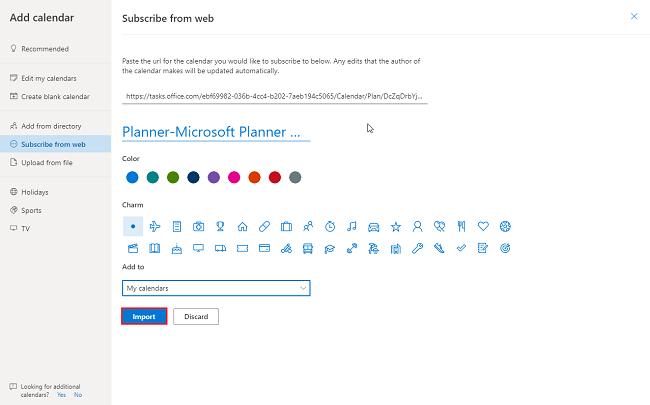 Here you go, you are all set up for completing the task you were assigned to complete two days ago.
Here you go, you are all set up for completing the task you were assigned to complete two days ago.
Now in this way, you can keep track of every task using Microsoft Planner.
If you use it daily with a broader usage, it will come out as the most powerful and useful application for you.
Read: Microsoft Project vs Planner vs To Do or Tasks app in Teams.
Nice post